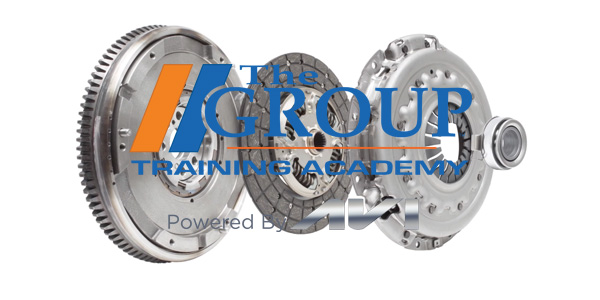Sample Review Questions:
1. Most manual transmissions and transaxles require what type of lubricant?
a. Multi-viscosity gear oil
b. Straight 80W gear oil
c. Automatic transmission fluid (ATF)
d. It depends on the vehicle application
2. Which of the following components is NOT included in a clutch kit?
a. Clutch release bearing
b. Clutch disc
c. Pressure plate
d. Clutch release fork
3. Which of the following components is the most likely cause of noise when the clutch pedal is depressed?
a. Worn pilot bearing
b. Worn release bearing
c. Worn pressure plate
d. Worn clutch disc
4. Which of the following components may have to be resurfaced when a clutch is replaced?
a. Pressure plate
b. Clutch disc
c. Flywheel
d. Release bearing
ANSWER KEY
1D, 2D, 3B, 4C
EXPLANATIONS:
1. Manual transmissions and transaxles require various type of lubricants, including ATF, gear oils and even motor oil. Always refer to the vehicle owners manual for the type of lubricant that is required. Using the wrong lubricant can cause shifting problems. Most manual transmissions/ transaxles do not have a recommended fluid change interval, but the fluid can be changed at 50,000 to 75,000 mile intervals to extend the life of the bearings and gears.
2. The clutch is a system consisting of three major components: the pressure plate, clutch disc and release bearing. The pressure plate is bolted to the flywheel and presses the clutch disc against the flywheel to transmit engine torque to the transmission. Pushing down on the clutch pedal moves the release bearing and pushes the bearing against the spring fingers on the pressure plate to release the clutch.
The friction linings on the clutch disc gradually wear away as the miles add up. As the disc gets thinner, it may start to slip. The clutch may also slip if oil gets on the clutch linings from a leaky rear main oil seal on the engine. The springs in the pressure plate can weaken over time from exposure to heat, and the surface of the pressure plate can become rough, grooved and cracked. The release bearing also experiences wear every time the clutch pedal is depressed.
Replacing the clutch is a labor-intensive job because the engine and transmission have to be separated to get at the parts. For this reason, it is a good idea to replace all three components at the same time.
3. When the clutch pedal is depressed, the release bearing pushes against the spring fingers on the pressure plate. If the release bearing is worn, it may make noise while it is making contact. A worn clutch disc or pressure plate can allow the clutch to slip, but won’t produce any noise. A worn pilot bearing may make noise when the flywheel is turning at a different speed than the transmission input shaft, as when changing gears or when the transmission is in neutral.
4. As the clutch disc wears from normal use, it also wears the face of the flywheel and pressure plate. Heavy wear can leave grooves in both surfaces. Slipping the clutch excessively produces a lot of heat, and may cause the flywheel to crack or develop hard spots.
If the surface of the flywheel is not smooth, flat and crack-free, it should be resurfaced before a new clutch is installed. If this is not done, it can accelerate clutch wear.
Resurfacing the flywheel requires unbolting the flywheel from the crankshaft, then grinding it flat on a resurfacing machine. Pressure plates may be resurfaced if they are rebuilt, but most are simply replaced if worn.
The flywheel should be replaced if it has deep cracks, or has worn or damaged teeth around the outside edge (unless the teeth are on a starter ring gear can be replaced separately).
Sections covered:













